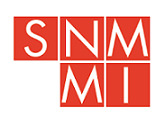A specialist in nuclear medicine uses molecular tracers (usually labeled with radioactive atoms) for diagnosis and therapy. These labeled tracers are most often used to produce images that provide information about organ function, as well as cellular function on a molecular level (molecular imaging).
What is a nuclear medicine physician?
A specialist in Nuclear Medicine uses molecular tracers (usually labeled with radioactive atoms) for diagnosis and therapy. These labeled tracers are most often used to produce images that provide information about organ function, as well as cellular function on a molecular level (molecular imaging). Molecular imaging can be combined with anatomical imaging by using specialized cameras. The most common diagnostic applications of Nuclear Medicine include the early detection of coronary artery disease, cancer diagnosis and staging, and the evaluation of the effect of cancer treatment. The fusion of molecular and anatomical information increases diagnostic accuracy and changes medical management. Radioactive materials are also used to treat a variety of health problems, including thyroid disorders and cancer.
How to become a nuclear medicine physician?
Specialty training required prior to certification: Sixteen months to three years, depending on prior training in other specialties.
What does a nuclear medicine physician do?
Nuclear medicine is a medical imaging specialty that uses radioactive materials to diagnose and treat a variety of diseases. Nuclear medicine procedures encompass many medical specialties, including oncologic, cardiologic, pulmonary, gastrointestinal, endocrine, psychiatric, orthopaedic, and infectious and inflammatory disorders.
Nuclear medicine procedures are the major clinical applications of molecular imaging and molecular therapy using targeted probes. Innovative nuclear medicine procedures and treatments designed for various molecular targets within the body are changing paradigms for approaches to a range of diseases and conditions.
As a nuclear medicine physician, you are expected to have good general medical knowledge and understand basic nuclear physics, biologic effects of radiation exposure, principles of imaging instruments and basic radiochemistry. Your knowledge in these areas is essential for accurate interpretation of nuclear medicine studies and in successful discussions with referring providers. In general, those who favor indirect patient interactions or consultation positions rather than direct patient management and long-term patient care enjoy nuclear medicine. Interest in technology, medical imaging, physics, radiochemistry and research will provide a good background for a successful career in nuclear medicine.
Nuclear medicine physicians mostly work regular hours, on average about eight to 10 hours a day, with relatively few emergency cases. Although uncommon, in certain places part-time work is also feasible. A work-life balance is easy to obtain in nuclear medicine compared with other medical specialties. Most nuclear medicine physicians practice in a hospital or academic medical center setting, while others can be involved in private practices or even purely research.
As a nuclear medicine physician, general knowledge of medicine is essential because you’ll encounter patients of all demographics, diagnoses and medical conditions. Most encounters with patients are through indirect interaction as a consultant. However, nuclear physicians may directly interact with patients through interviews and also through various radioactive material therapies (e.g., I-131 treatment for hyperthyroid and post-thyroidectomy thyroid cancer, radioimmunotherapy for refractory lymphoma therapies, and palliative bone pain treatments).

Society of Nuclear Medicine and Molecular Imaging
snmmi.org
1850 Samuel Morse Dr
Reston, Virginia 20190
(703) 708-9000
Contact information